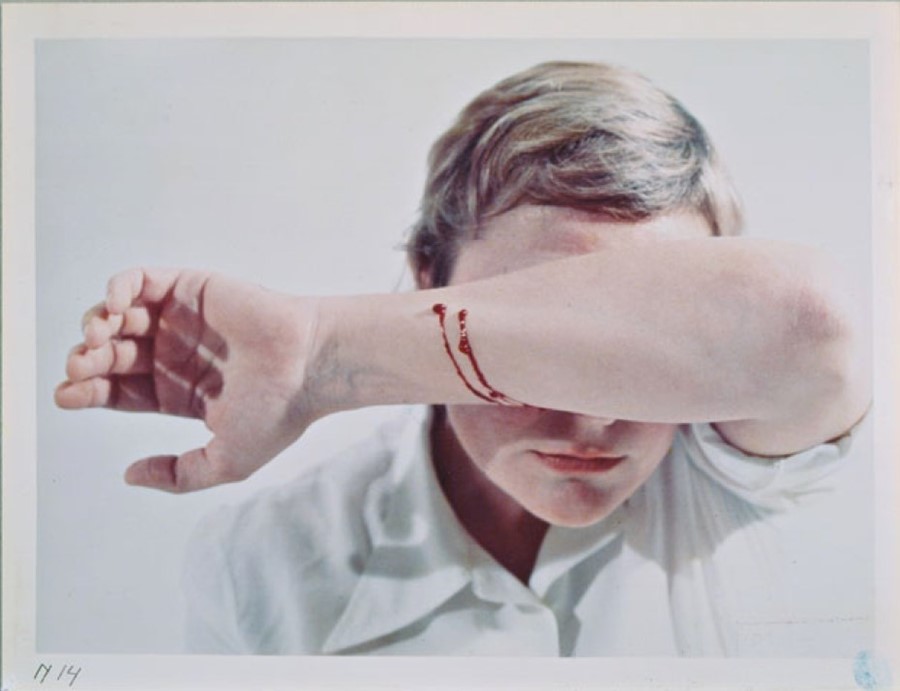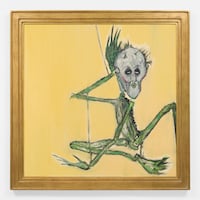This isn’t work for the squeamish – check out a timeline of lifeblood being used to make art
Blood drips with symbolism. Blood animates the veins of the living, and through its sacrificial letting, can connect us with the sacred. Mesoamerican cultures drenched the earth with ritualistic blood shedding; Catholic ceremonies transform wine into the blood of Christ. Despite its consecrated role in religion and ritual, within our modern institutions blood has become a hazardous pathogen, a dirty disease-carrier. Blood has been sanitised from most of our daily doings; the risk and power of blood flows quarantined in our veins.
Artists use blood in their work to physicalise its stakes, to add to its aura. There’s something risky about using blood, something dangerous in its potential impurity. Most viewers find bloodied work icky and off-putting—which is ironic given that, like all bodily fluids, we all carry them within. The grossness around blood is connected to the grossness we've been programmed to feel about our own bodies; it's a side effect of alienation. Art that’s splattered with blood shocks us back into our corporeality.
For artists, blood presents a host of challenges and liabilities. It is, for example, illegal to transport blood and other biohazard substances using government bureaucracies. Plus, given that its organic matter, blood doesn’t conserve easily. The artist’s historical attraction to blood, then, isn’t one of convenience, but rather, one of risk-taking. Post-AIDS, blood-dripped art is often deemed political. This is especially true for women, who’ve unsurprisingly recycled the biological waste of their monthly cycles into material for art about their condition. As a nod to the bloodied delights of Halloween, here's eight artworks made with the horror and power of gore.
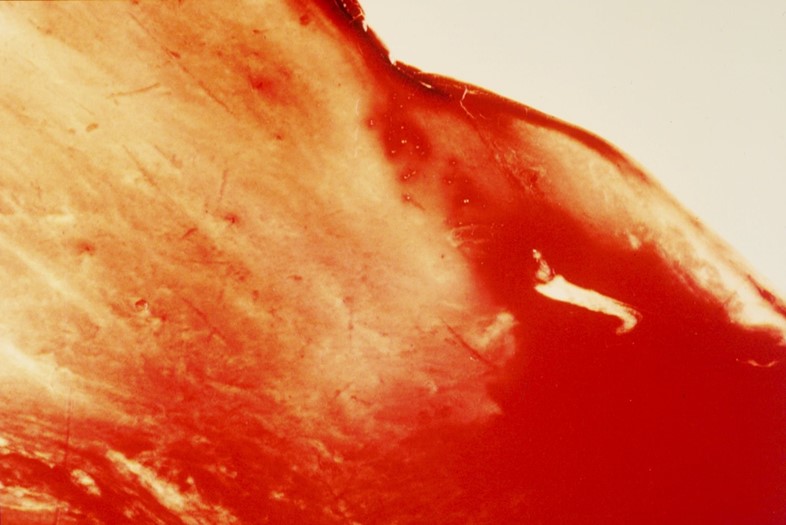
ANDRES SERRANO, BLOOD AND SEMEN V, 1990
Best known for his controversial series of pissing Christ portraits, Andres Serrano’s work muddles with the sacrilegious. Bodily fluids drench his images, often at the cost of public incitement over his use of religious iconography. But other works, like this one included in the series Blood and Semen, remove the fluids from any corporeal or religious context, allowing the blood to stain in hauntingly abstract compositions. Although the meaning of the image is left up to interpretation, Serrano did play with blood when the threat of AIDS was filling public consciousness, giving the piece a certain threatening air.
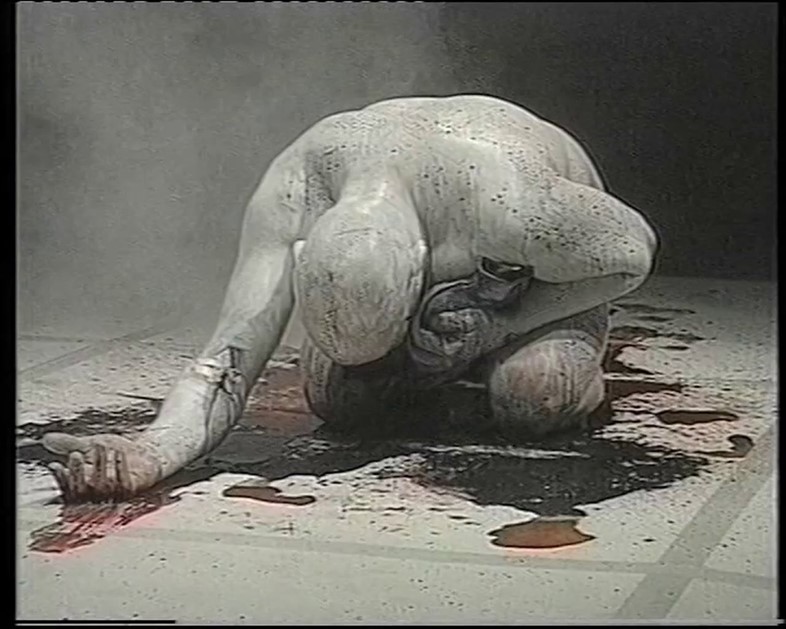
FRANKO B, I’M NOT YOUR BABE, 1995
Franko B’s use of ritualistic blood letting bleeds into the disturbed, making use of the theatrical, propping himself as a "mute body-object" that is, drop by drop, disintegrated on stage. Although blood is often marked with dirtiness, for Franko, his performative bleeding is closer to the ancient medical practices of cleansing the body through the draining of blood. As always, blood carries the disease, but here, cleansing can come from its shedding.
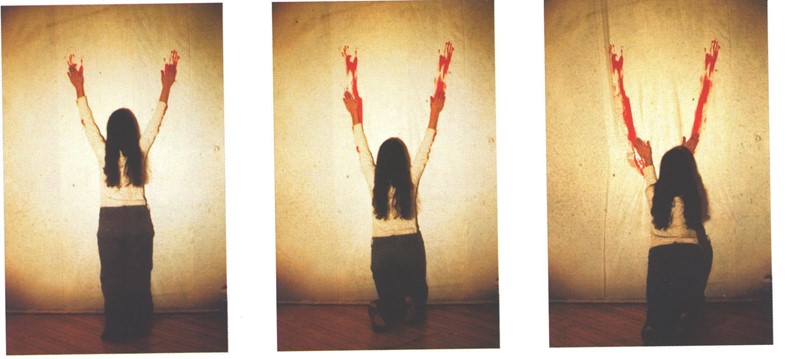
ANA MENDIETA, BODY TRACKS, 1982
Ana Mendieta performed Body Tracks in 1982 New York City — all the press release warned was that "white cloth and animal blood" would be used. In the performance, Mendieta thoroughly dipped her hands into the mixture of animal blood and tempera and dragged her hand across three sheets of paper affixed to the wall. At first she made handprints, and then pressed her body down the paper, leaving a corporeal trace — literally tracks of her body — across the work. The use of blood only underlined the physicality of the work. Our blood always leaves a trace.
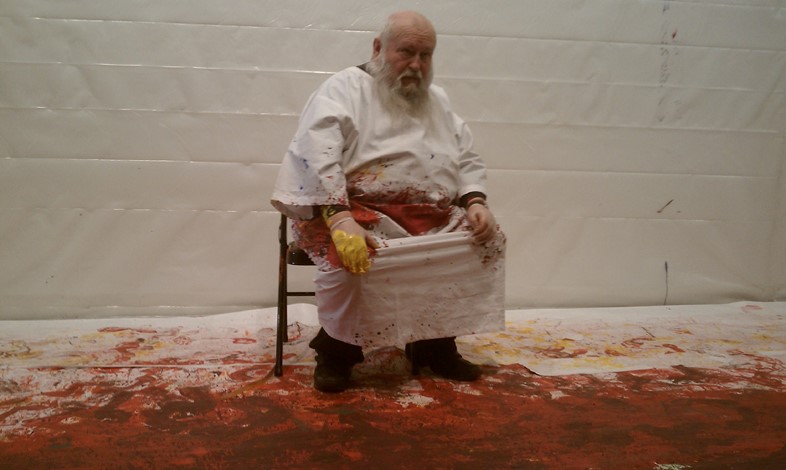
HERMANN NITSCH, BLOOD PICTURE, 1962
Hermann Nitsch is a multimedia artist and performer associated with the Viennese Actionists — a collective known for its brutal and bloody performances that included crucifying animal carcasses and ripping them apart. Blood Picture is one of the first works Nitsch made with blood. He soaked the canvas in it, and later splashed on more, leaving a dried painting that resembled used medical gauze. It's unclear whether the blood is his own.
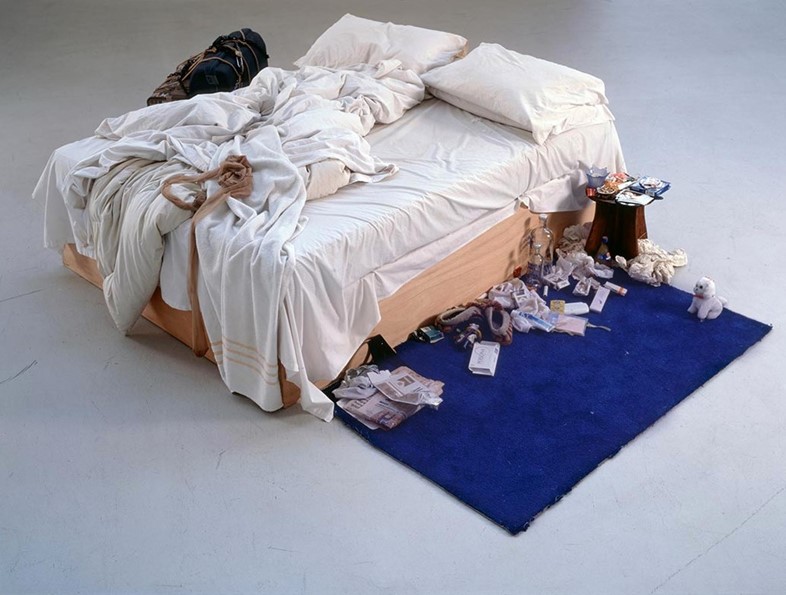
TRACEY EMIN, MY BED, 1999
The bad girl of the Young British Artists made one of her biggest splashes when she submitted this sculpture into the 1999 Turner Prize competition. The work is often lauded for its honesty. Emin displayed an unpolished peep into her bedroom — blood-stained underwear and all. It is an unconventional form of self-portraiture, giving the viewer a glimpse into Emin’s chaos. Here, Emin uses blood to raise the stakes of the real and blood becomes a voucher for artistic daringness and authenticity.
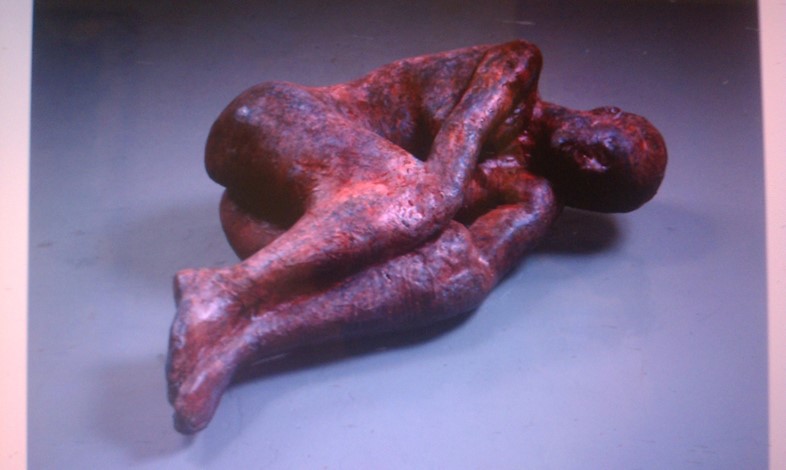
KIKI SMITH, BLOOD POOL, 1992
Despite not actually using any blood to make this piece, Kiki Smith's fetal-like sculpture connotes all of the texture and color of fresh flesh. With the title, Blood Pool, you can almost imagine the cuddled child swaddling in a pool of its own blood. The back of the wax sculpture features an exposed spine, adding to the fragility and spookiness of the piece. This sentiment is especially salient given that it was made in the wake of the AIDS crisis, where blood represented both life and death.
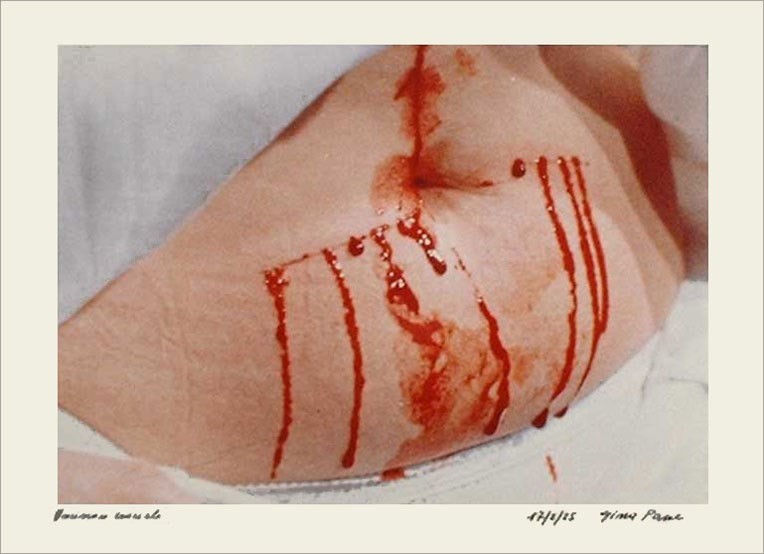
GINA PANE, ACTION PSYCHE, 1974
Gina Pane was fascinated with self-mortification. Her art is excruciating, both for the viewer and for the artist, whose performances comprise of her cutting herself across her body. This self-enacted violence undercuts the stereotype of feminine passivity by countering it with extreme aggression. Pane plays with masochism, letting her blood be witness to our culture’s sedated relationship to witnessing everyday violence.
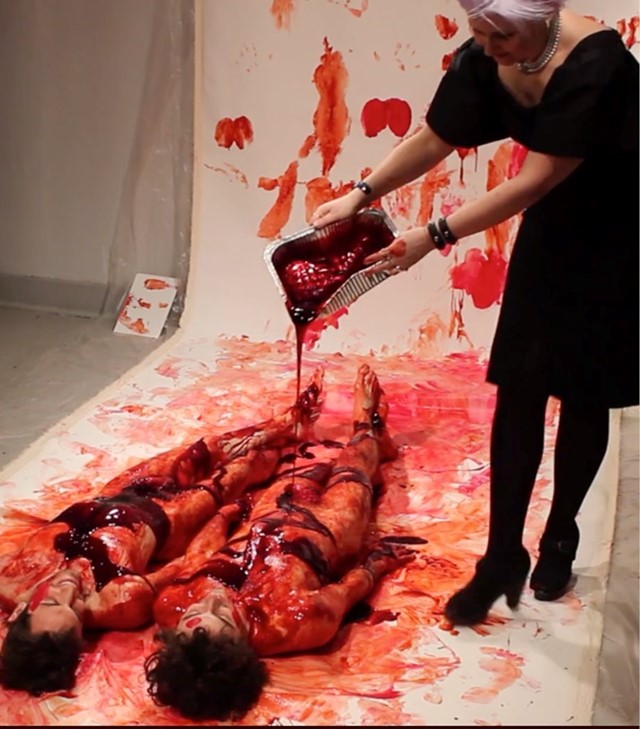
CHRISTEN CLIFFORD, I WANT YOUR BLOOD, 2013
Christen Clifford leads a new wave of feminist performance art steeped in the politics of menstruation. In I Want Your Blood, a performance in three parts, Clifford has for the past year collected several women’s menstrual blood, addressing and undermining the stigma attached to our periods. The collected samples of blood will be bottled together in glass containers, poured into little perfume vials, and, as Clifford did in a recent performance, used as paint to dip willing young men as paint brushes a-la Yves Klein. Breaking with past uses of blood, that reveres its risk and dirtiness, Clifford hopes for a celebration and reclamation of our own menstruation.
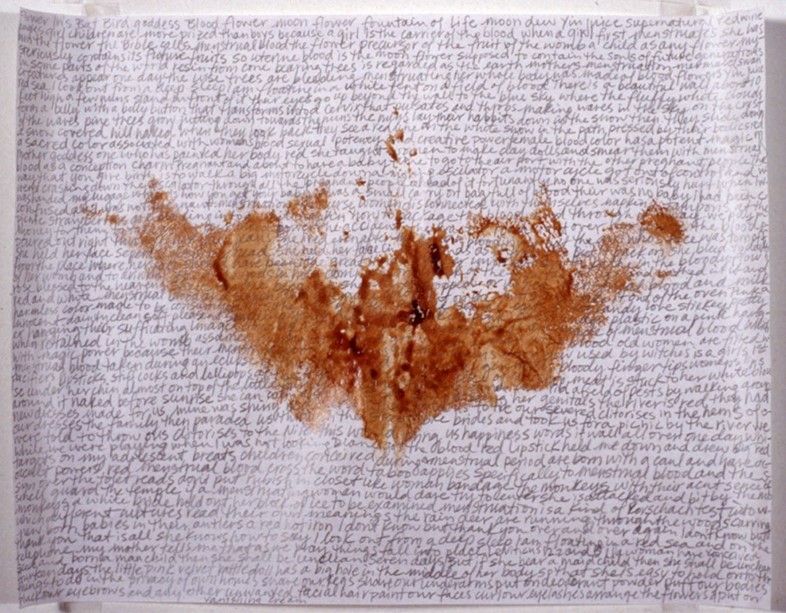
PORTIA MUNSON, MENSTRUAL PRINT WITH TEXT, 1993
Portia Munson’s practice hones in on her avarice for amassing. She’s best known for collecting hundreds of colour-coded objects, creating sculptures that accumulate hues. For this projec, she also collected her menstrual blood. Starting in the late 1980s, Munson made menstrual prints every month for about 8 years. She made these prints by pressing sheets of paper against my body while the blood was flowing. For exhibitions, Munson would display each month's prints in a grid on the wall to resemble a calendar. For this work, Munson inscribed a text that names both personal and historical narratives about menstruation and menstrual rites. The personal elements largely focused on dreams that I had that related to menstruation. Each print reads like a Rorschach, resembling creatures both touching and spooky, like an angel, or a bird, or a bat.
